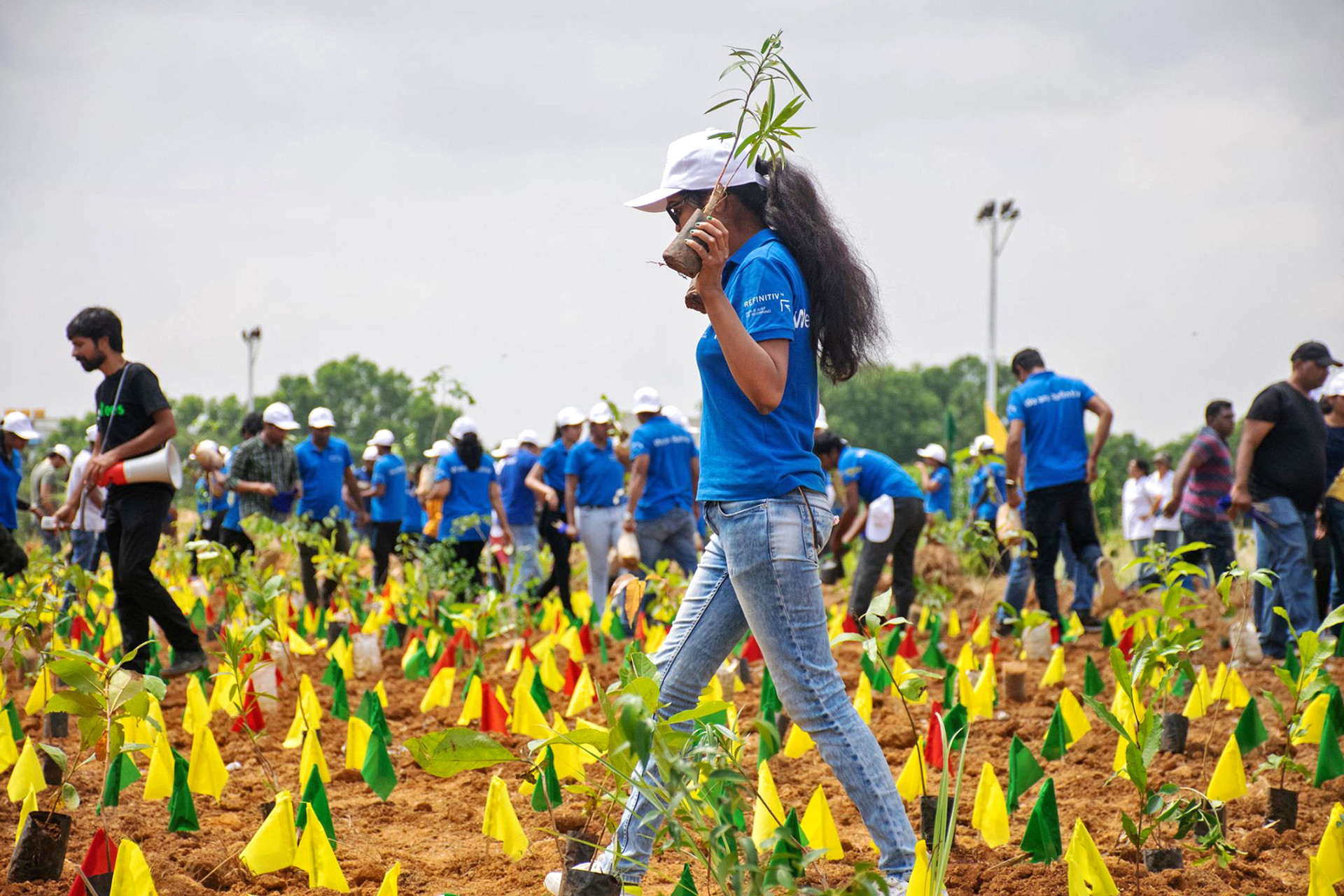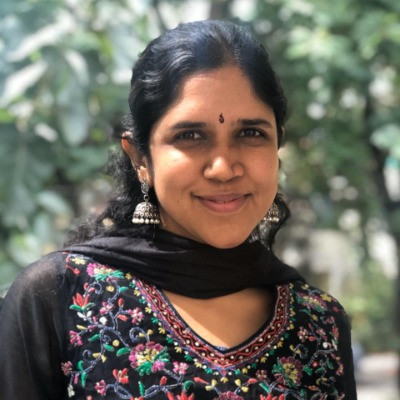Did you know that Bangalore city's foundation was laid by Kempe Gowda, way back in 1537? A chieftain of the Vijayanagara Empire, he envisioned a futuristic city with towns, market places, gardens and residential areas. In many ways, Kempe Gowda’s vision for Bangalore has come true, and the city continues to be a destination that embodies the future. But, were he to walk the land today, would he be pleased to see all the infrastructural development around him or would he wonder about the missing gardens and lakes that were a crucial part of his vision for the city?
It doesn’t take a ruler from the past to remind us that our cities are no longer the green havens they once were. In 2017, scientists from the Indian Institute of Science, Bangalore, used satellite imagery and remote sensing to visually represent the alarming rate at which Bangalore is losing its green cover. Red spots (signifying built-up area) covered the satellite-rendered map as the green spots (signifying vegetation) receded into oblivion. Between 1973 and 2017, Bangalore had lost 88 per cent of its vegetation and 79 per cent of its wetlands.
While the percentages hit you harder, anyone who has walked through the streets of the Garden City of India would share the same sentiment – trees are quickly disappearing to make way for more of the concrete jungle. Most of us would shrug at the realisation, it is not like we can do much about it, right? Kapil Sharma disagrees. From planting saplings on Bangalore roadsides to building an organisation and gaining the support of 7000+ volunteers, Kapil Sharma is the Founder & Director of Bangalore-based NGO SayTrees. Today, SayTrees is one of the most sought organisations when people want to make a difference by adding more greenery to their cities and villages.
Durgesh Agrahari, Head of Programs and Partnerships at SayTrees, gave us a sneak peek of what the green army has been up to.
One Sapling At A Time
Hailing from Raipur, Chhattisgarh, Kapil Sharma moved to Bangalore to pursue his engineering degree. Although he instantly fell in love with the city, he couldn’t help but notice how Bangalore’s fast-paced development came at a huge cost. The number of trees was drastically reducing, and Sharma felt forced to do what he could to make a difference. In 2007, he began planting saplings near the MG Road area as a weekend activity. Soon, he was joined by his close friends and other like-minded individuals. They worked together to find the right place to plant saplings and ensured that the plants were cared for.
The group’s activities caught the eye of corporates and other business entities, who showed interest in contributing to the cause. “This was around 2010, and there was a gradual shift occurring in people’s attitudes. They felt that instead of spending money on a team lunch or outing, they could contribute towards a much better cause like adding more trees to their cities,” says Agrahari. The volunteers at SayTrees put the funds to proper use, gaining permission from government organisations to plant saplings in various areas across the city.
By 2013, Sharma had registered SayTrees as an NGO and began working with BBMP (Bruhat Bengaluru Mahanagara Palike), the administrative entity responsible for infrastructural projects in Bangalore, helping them in their efforts to revive lakes within the city. “BBMP would rejuvenate lakes, and SayTrees would then help plant trees around the lake area. We mobilised funds for these projects, and our volunteers stepped in to help with the planting of saplings. That’s how this movement grew and gained momentum,” he adds.
New Frontiers
Today, SayTrees works in four states across the country and has been instrumental in mobilising more than 1000 unique plantation projects in various locations – urban and rural. “We have planted about six lakh saplings with an average survival rate of more than 80 per cent. In fact, survival rates of saplings in urban areas is over 90 per cent,” explains Agrahari.
SayTrees has added green covers in the states of Karnataka, Andhra Pradesh, Tamil Nadu and Maharashtra. Beyond tree planting, the NGO also works on water conservation and rural development. SayTrees is now working towards promoting agroforestry, by planting fruiting trees near agricultural lands to support farmers with a sustained parallel income. “This is not a new concept. This was the approach earlier, and farmers had multiple trees around their farms,” Agrahari adds. Having built a rapport with the farmers through their rural projects, SayTrees decided to work on sustainable methods which would help them gain better incomes. They also aid NGOs in rural areas by connecting them with CSR (Corporate Social Responsibility) outreach initiatives, enabling the rural institutions to operate on a better scale.
The organisation's water conservation initiatives include rejuvenating three lakes in the Bangalore city where SayTrees worked on desilting, bund-making and planting trees around the area. They have also worked on two lakes in Tamil Nadu, and recently, completed a water conservation project in the northern part of India. Additionally, the team funded a pilot project in Madhya Pradesh, where they added solar lamps in a rural area. The project helped the villagers with their commute, and they reported reduced incidents of robbery.
Green Cities
Vanishing green spaces are a problem in cities across the world. SayTrees has brought the problem and its solution to focus. In a report by the Yale School of Environment, it was revealed that India's capital city lost about 112,000 trees between 2005 and 2017. The report also showcased the example of Sheffield, United Kingdom, which saw several protests over the last few years as residents criticised the mass felling of healthy trees for various developmental projects. Despite the protests, as many as 6000 trees were cut.
Rampant development, sadly, cannot be avoided, but organisations like SayTrees are spreading the message that urban reforestation is possible, even in the midst of all the chaos. Using the Miyawaki method, also known as the Potted Seedling method, SayTrees uses small pieces of land to create dense forest areas. Native saplings planted in this manner grow faster, and they also serve as carbon sinks within cities.
“In 2017, we carried out our first Miyawaki project in KR Puram, Bangalore. In a small patch of land that belonged to the Indian Railways, we planted about 2000 saplings. For a while before that, we were brainstorming on how to create forest patches in urban areas where space is a constraint. Once we found the Miyawaki method, we thought that we must see how it works,” says Agrahari.
The results of this first experiment were ‘fantastic’. Not only did they create a dense forest patch in a small area, but the place became a frequent rest stop for many birds, butterflies as well as several insect species. Since, the team has gone on to work on 50 unique projects, most of it in and around Bangalore. SayTrees also transformed a landfill site in Ghazipur, Uttar Pradesh into a Miyawaki sanctuary by planting more than 1000 saplings in a 450 sq.m. area.
Although the technique does require some work initially, Agrahari is confident that this is the way forward for cities. SayTrees carries out appropriate tests on the soil and enriches the land using organic inputs to meet the needs of the plants. They also look for native species to populate the space. “We have to ensure that the saplings planted in this method are watered every day for at least two years. Saplings planted via the traditional method do not require so much attention. But, after two years, the Miyawaki forest patches become self-sufficient. Unless we (humans) decide to intervene, they continue to grow and flourish.” That’s nature for you in a nutshell.
So what makes SayTrees different? “The care and attention we give our saplings,” comes the instant response. Depending on the planting method, SayTrees spends a year or two tending to the saplings, making sure they are fit for the world. Their website and social media pages are full of before and after images showing barren landscapes that have gotten a green makeover. “We can do all this because of our volunteers and our sponsors,” says Agrahari. More than 7000 volunteers have come forward to make various projects a success.
SayTrees now aims to expand to other states in the country, while engaging communities in everything they do. Looks like it is time for a green revolution of a different kind.









